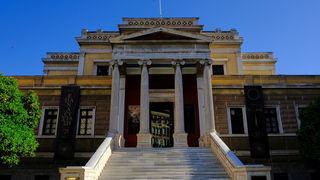Volume “Eleutherna” | “The Museums Cycle” Publishing Programme
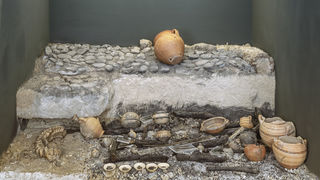
“The Museums Cycle” series, a publishing initiative focusing on Greek areas of archeological interest, expanded in 2020 with the publication of its 19th volume, which is devoted to the ancient city of Eleutherna, in Crete and was produced with the support of the John S. Latsis Public Benefit Foundation and Lamda Development. The series, published for the first time in 1997, is one of the Foundation’s longest-running publishing programmes, aiming at promoting Greece’s cultural heritage in a scientifically thorough and aesthetically appealing manner; its ultimate goal is to provide in-depth knowledge and to compose a unique cultural mosaic of ancient Greece.
The author of this volume, Mr. Nikolaos Chr. Stampolidis, Professor of Classical Archeology and the mind behind the idea of the Archeological Park and the Museum of Ancient Eleutherna, has managed to provide an insightful presentation of the natural beauty of Eleutherna and the findings at the Orthi Petra necropolis, shedding light on centuries of human activity in the area, thus offering a precious legacy of history and scientific knowledge.
This tribute volume offers a significant opportunity to introduce and present Eleutherna, a Cretan city of great importance in ancient times, and the archeological findings that came to light during 36 years of systematic and thorough excavations conducted by the University of Crete. The great archeological remains linked to various different eras – including stone tools, inscriptions, sculptures, mosaics, coins, Oriental objects, objects made of metal and other valuable materials, glass pots, etc. – are strong indications of the wealth, the continuous habitation of the area and the societal structure of Eleutherna, from the late Neolithic/early Chalcolithic Age to the post-Romanand proto-Byzantine era, providing significant information on the inhabitants’ everyday life.
The impressive findings of the Orthi Petra necropolis are of particular importance, due to their relevance to the Homeric epics and in particular to the funeral traditions and rituals. The most important find of the necropolis – which is now exhibited in the Museum of Eleutherna – is the funeral pyre ΛΛ90/91 (late 8th century BC) of the Eleuthernian warrior, and that of the slaughter of the captive which illustrates the Homeric description referring to Patroclus’s funeral pyre [Iliad, Rhapsody XXIII]. This unique discovery is the first instance where archeological evidence corroborates the Homeric description of the funeral pyre and, as such, it contributes to a better understanding of how the epic was composed.
This volume is not for commercial purposes and is distributed gratis to university archeology departments, libraries, museums, research centres, organisations and other cultural and research institutions in Greece and abroad. The list of recipients includes the world’s most prestigious universities such as Oxford University, the Sorbonne Université, and Princeton University, preeminent museums such as the Metropolitan Museum of Art in New York, the Louvre and the Hermitage, as well as international organisations such as UNESCO.
Like the other 18 volumes of the series, “Eleutherna” is available in digital form in Greek and in English, in the Foundation’s e-Library.
- 489 pictures illustrate the monuments and findings of the 328-page “Eleutherna” volume.
- Throughout the last 36 years, students from Greece, Cyprus, Denmark, the Netherlands, Germany, Spain, Italy, the United Kingdom, Australia, the United States of America, Japan, and Turkey have participated in the excavation works.
“As easy as it may be to say ‘I love’, it is twice as hard to act on it. Because that requires persistence, patience, endurance, and a state of mind, heart, and body; and every single time each one to prevail over the others. So that, at the end of the day, you have proof of your love. This is my proof of love for ancient Eleutherna, the creation of an archaeological site and its museum, that is, a public good. An epitome of this is included in the nineteenth edition of ‘The Museums Cycle’ series, which started back in 1997 by the John S. Latsis Public Benefit Foundation and continues today with Lamda Development on board; a book that will be forever.”
Nikolaos Chr. Stampolidis
Professor of Classical Archeology, University of Crete
Author of the “Eleutherna” volume
GRANTS
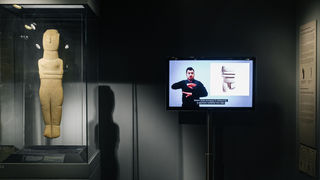
Creation of sign language video
Museum of Cycladic Art
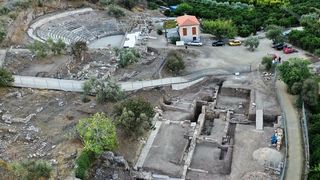
Programme for the Restoration and Promotion of Monuments in Ancient Epidaurus 2021
NPO ''ASCLEPIADES''
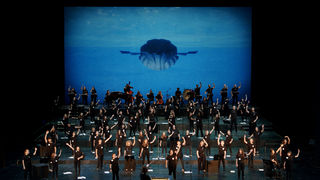
Interdisciplinary Educational Programme
Greek National Opera
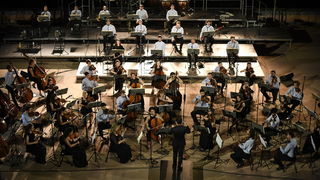
Musical Performances & Educational Activities
Greek Youth Symphony Orchestra
